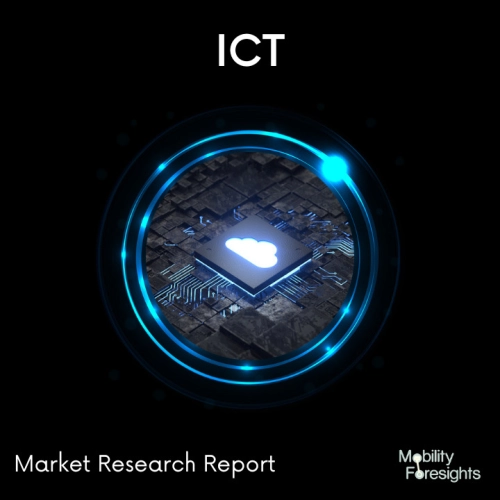
- Get in Touch with Us

Last Updated: Apr 25, 2025 | Study Period: 2023-2030
In Rugged Embedded Systems: Computing in Harsh Settings, the author discusses architectural methods, cross-stack hardware/software strategies, and upcoming difficulties and possibilities for designing dependable embedded systems for harsh environments.
A computer hardware and software combination created for a particular purpose is an embedded system. Additionally, embedded systems may operate as part of a bigger system. The systems may be programmable or may only perform certain functions.
There are three categories of embedded systems: Small-scale, medium-scale, and sophisticated are the first three scales. The main distinction between a microprocessor and a microcontroller is that the former supports fewer types of bit handling instructions while the latter offers a wide variety.
Embedded systems are used to manage a certain operation inside of a device. Embedded systems are often merely made to carry out this task repeatedly, but more advanced ones may take control of whole operating systems.
A microprocessor-based computer hardware and software system known as an embedded system is created to carry out a specific task, either independently or as a component of a larger system. An integrated circuit built to do computing for real-time processes is at the heart of the system.

The Global Rugged Embedded System market accounted for $XX Billion in 2022 and is anticipated to reach $XX Billion by 2030, registering a CAGR of XX% from 2023 to 2030.
The ECX-2200/2100 Rugged Embedded System was introduced by Vecow.
The ECX-2200/2100, the most recent embedded system, was released, according to Vecow. Vecow ECX-2200/2100 offers high-performance computing and dependable configurations for mission-critical edge applications and is ideal for Factory Automation, Rolling Stock, In-vehicle Computing, Smart Retail, AMR/AGV, and any AIoT.
It is powered by a 10th Gen Intel Xeon/Core i9/i7/i5/3 Processor and includes industrial-grade features like rugged X-coded M12 PoE+ GigE LAN port.
Featuring a workstation-grade platform of the newest generation: Vecow ECX-2200/2100, a 10-core 10th Gen Intel Xeon/Core processor that operates with an Intel W480E chipset and supports a maximum 95W TDP CPU, outperforms prior Vecow CFL-S systems by up to 45% in terms of overall performance and 87% in terms of graphics performance.
The ECX-2200/2100 enables any edge AI applications by achieving this. Vecow ECX-2200/2100 provides high-speed connections including USB 3.2(10G), PCIe 3.0 (8GT/S), SATA III (6G), and GigE LAN to support a variety of embedded use cases (1G).
Variations of the Vecow ECX-2200/2100 are robust and versatile. The system has 4 X-coded M12 and PoE+ ports that deliver 6 GigE LAN to meet the system's demanding AI-enabled vision applications. Vecow EXC-2200/2100 offers countless ways to scale functionality thanks to its PCIe/PCI slot, M.2, Mini PCIe, and optional SUMIT A, B socket.
Additionally, the ECX-2200/2100 has an innovative mechanical design that enables customers to maintain it more quickly and at a lesser cost. The newest WiFi 6 technology, external Nano SIM ports for 5G/4G/3G/LTE/GPRS/UMTS, and smooth communications allow for effective and efficient operation.
COMPANY PROFILE
| Sl no | Topic |
| 1 | Market Segmentation |
| 2 | Scope of the report |
| 3 | Abbreviations |
| 4 | Research Methodology |
| 5 | Executive Summary |
| 6 | Introduction |
| 7 | Insights from Industry stakeholders |
| 8 | Cost breakdown of Product by sub-components and average profit margin |
| 9 | Disruptive innovation in the Industry |
| 10 | Technology trends in the Industry |
| 11 | Consumer trends in the industry |
| 12 | Recent Production Milestones |
| 13 | Component Manufacturing in US, EU and China |
| 14 | COVID-19 impact on overall market |
| 15 | COVID-19 impact on Production of components |
| 16 | COVID-19 impact on Point of sale |
| 17 | Market Segmentation, Dynamics and Forecast by Geography, 2023-2030 |
| 18 | Market Segmentation, Dynamics and Forecast by Product Type, 2023-2030 |
| 19 | Market Segmentation, Dynamics and Forecast by Application, 2023-2030 |
| 20 | Market Segmentation, Dynamics and Forecast by End use, 2023-2030 |
| 21 | Product installation rate by OEM, 2023 |
| 22 | Incline/Decline in Average B-2-B selling price in past 5 years |
| 23 | Competition from substitute products |
| 24 | Gross margin and average profitability of suppliers |
| 25 | New product development in past 12 months |
| 26 | M&A in past 12 months |
| 27 | Growth strategy of leading players |
| 28 | Market share of vendors, 2023 |
| 29 | Company Profiles |
| 30 | Unmet needs and opportunity for new suppliers |
| 31 | Conclusion |
| 32 | Appendix |